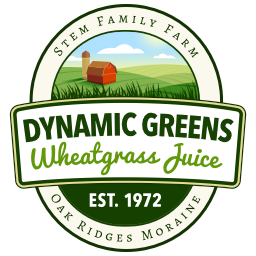USDA Database for the Oxygen Radical Absorbance Capacity (ORAC) of Selected Foods, Release 2
 Oxygen Radical Absorbance Capacity (ORAC) is a method of measuring antioxidant capacities of different foods and you can learn more about it here at Wikipedia ORAC.
Oxygen Radical Absorbance Capacity (ORAC) is a method of measuring antioxidant capacities of different foods and you can learn more about it here at Wikipedia ORAC.
In terms of wheatgrass juice, there is a study done with regards to Wheatgrass Juice ORAC Rating.
It is a wet weight reading and shows:
ORAC range of 3,990 – 4,820 per 100 grams
Correlation between the high antioxidant capacity of fruits and vegetables, and the positive impact of diets high in fruits and vegetables, is believed to play an important role in the free-radical theory of aging. It was developed by the scientists at the National Institute on Aging in the National Institutes of Health (NIH) in Bethesda, Maryland, but this method is not approved by the National Institute of Heath. The US Department of Agriculture lists a database of the ORAC value of common foods (no wheatgrass).
ORAC is one of those confusing numbers as a number of health food companies spin the numbers. When comparing ORAC data, some evaluations will compare ORAC units per grams dry weight, others will evaluate ORAC units wet weight and still others will look at ORAC units/serving. Under each evaluation, different foods can appear to have higher ORAC values and most of these values have never been published in scientific literature. To make it just a little more confusing, it is not known whether such values are accurate or how absorbable and functional these concentrated antioxidants are in the human body.
If the data was being spun for marketing purposes, it could be represented as dry weight which would show:
99,750 – 120,500 per 100 grams
For proper comparison purposes, you should use the range of 3,990 – 4820 per 100 grams. Note that 100 grams represents about 3.4 fl. oz. of wheatgrass juice.
 Here is a link to the latest story https://news.ca.msn.com/top-stories/two-new-studies-debunk-benefits-of-multivitamins
Here is a link to the latest story https://news.ca.msn.com/top-stories/two-new-studies-debunk-benefits-of-multivitamins Even food you think is unprocessed is heavily processed. Check out the manufacturing facts of
Even food you think is unprocessed is heavily processed. Check out the manufacturing facts of 